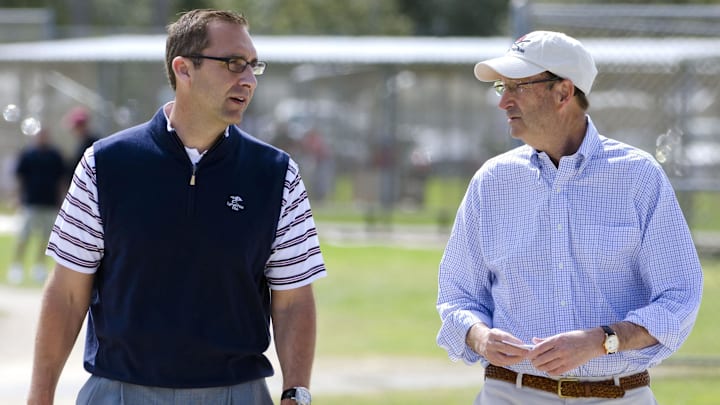There are some crazy big spenders in Major League Baseball, there are some true tightwads, and somewhere in between are the St. Louis Cardinals.
MLB Trade Rumors recently listed the largest contract in franchise history for each team, and you might be surprised to find that only five teams have given out smaller top deals than the St. Louis Cardinals' biggest pact, their $130 million, half-decade commitment to first baseman Paul Goldschmidt, which was signed on March 24, 2019.
Big-dollar deals have been the talk of the last several weeks of free agency, with Aaron Judge,
(maybe) Carlos Correa, Trea Turner, Xander Bogaerts, Jacob deGrom, Dansby Swanson, Carlos Rodon, and Brandon Nimmo are all inking long-term deals in excess of $150M. That's (probably) eight contracts spread among six teams in just the last few weeks that exceed the largest expenditure the Cardinals have ever made.
Certainly, the Gateway City doesn't have the market clout of the City that Never Sleeps, the City of Angels, the Windy City, the City of Brotherly Love, or...whatever nicknames San Diego and Dallas-Fort Worth have. But it's not just the biggest markets that have doled out more cash to a single player than St. Louis.
Seattle, Milwaukee, Cincinnati, and Tampa Bay have allocated more money to their best players than St. Louis. Sure, those deals have spread the money over more years, but each of these teams has made the effort to lock down their talent, to keep them from getting away. However, given the number of those pacts that have looked regrettable, have they really been worth it?
Perhaps this is just the Cardinals being smart. After all, they avoided the pitfalls of the Albert Pujols and Jason Heyward contracts signed by the Angels and Cubs, respectively. And the Redbirds' continued success this century (just one losing season since 2000) shows they are adept at allocating the resources they do have, creating a mix of veterans and youngsters who keep the team competitive year after year after year.
But it's also at least partly about the Cardinals being overly frugal. After all, it was owner Bill DeWitt who said in June 2020, "The industry isn't very profitable, to be honest." I'm not sure how honest that statement really was, Mr. DeWitt, given the expenditures several teams have made this winter, the industry's $11 billion revenue total last season, and the $900 million windfall from the November sale of BAMTech to Disney.
St. Louis did splurge on a new starting catcher, bringing in long-time Cubs rival Willson Contreras on a five-year, $87.5M agreement. That, however, has been the only transaction of note. Meanwhile, several other National League competitors have improved through free-agent signings and trades, leaving the Cardinals as perhaps the seventh-best team in the senior circuit.
That position is right around average, which also happens to be where the Cardinals' projected payroll is at the moment when arbitration estimates are factored in. Middle of the pack isn't a great place to be unless you're the Rays, who probably could consistently win 100+ games if given that type of financial flexibility.
St. Louis is a perennial contender playing in a weak division, so a postseason berth is likely, if not a given. Getting into the playoffs is the biggest first step, with the Phillies and other teams showing last fall that a hot streak can carry a team deep into October. But a bigger payroll provides greater protection if and when something goes awry, whether in spring training or during the Fall Classic.
Will the Cardinals' conservative spending patterns continue to serve them well as the big-market behemoths collect backup players earning eight-figure salaries? When general manager John Mozeliak says, "I definitely know that our payroll will go up," the question becomes how much, and will it be enough? Time will tell. Time will tell...
